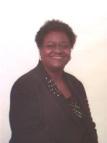|
During the years after the Civil War, America was morally depressed and religiously backslidden. Civil War veterans entered business, government and the Church with “battlefield ethics”. Young military recruits lacked the training of their elders and respect for church traditions and doctrines. Church institutions such as “the mourner’s bench for penitent sinners”, “class meetings for the perfection of the saints and camp meetings” had been abandoned.
In the midst of these conditions, Southerners called for revival. This southern “call” was prevalent from 1865 to 1867. In the 1866 General Conference of the Methodist Episcopal Church, South, bishops “called for a return to Wesleyan principles as an answer to...postwar moral crisis”. However, it was not until 1870 that southern Methodist bishops began to re-emphasize sanctification stating, “Nothing is so much needed at the present time throughout all these lands, as a general and powerful revival of scriptural holiness.”
Although the South experienced a short revival, southern Church leaders were preoccupied with reconstruction. Southern States were impoverished after the war.1 Methodist churches “lay in ruins or were seriously damaged”. Many Methodist clergy were “killed or wounded” in the war.2 Many southern Caucasian-Americans resented African-Americans because 1) the South had loss the war 2) the southern economy was devastated as a result of the war 3) the slaves had been emancipated 4) reconstruction had been forced upon them. Rich and poor Caucasian-Americans felt such resentment. Rich Caucasian-Americans were incensed because the Emancipation Proclamation changed their lifestyle and reduced their wealth. Poor Caucasian-Americans were incensed because the freed slaves increased competition for menial jobs.3 After the Emancipation Proclamation, Phoebe Palmer stated for years she had expected “days of sadness when the righteous Judge would chasten us for the cruel wrongs of the slave”.4 During these “days of sadness” religion was a “solace” for Southerners.
Northern Methodists then initiated camp meetings and a “crusade for holiness” that would become a national movement in America. Eventually this movement resulted “in the formation of over a hundred [Holiness/Pentecostal] denominations around the world”.5 Northerners had also believed a holiness revival such as the one of 1858 would provide relief from “the church’s malady”6 and the moral decline in America.
The idea of starting holiness camp meetings was conceived by Rev. J. A. Wood, author of Perfect Love, an 1860 best-seller. In August 1866, Wood remarked to Harriet E. Drake of Wilkes-Barre, Pennsylvania that the teaching of sanctification “was suffering an eclipse within” the Methodist Church. The doctrine and experience of entire sanctification had often been opposed. Wood remarked, “...some camp meetings for the special work of holiness ought to be held”. Harriet agreed to finance one-half of the cost of such a meeting.
Wood then mentioned the idea to Rev. William B. Osborn of New Jersey. Osborn was a member of the New Jersey Methodist Conference. Osborn communicated the idea to Rev. John S. Inskip of New York City. Inskip was pastor of Green Street Methodist Episcopal Church. Together Inskip and Osborn arranged the first holiness camp meeting.
The meeting was held July 17-26, 1867 in Vineland, New Jersey. It was called by a group of Methodist ministers who called themselves The National Camp Meeting Association for the Promotion of Christian Holiness.7 In his article, Holiness Movement, Charles Edwin Jones states this association was made up of eastern Methodists for the purpose of reshaping “Methodist institutions to conform to the practice of camp meeting evangelists”.8
Rev. Alfred Cookman wrote the “call” to the meeting.9 Cookman became a leader in the resulting Holiness movement.10 This “call” was “addressed to all irrespective of denominational ties...who feel themselves comparatively isolated in their profession of holiness”. The meeting’s objective was to “realize together a Pentecostal baptism of the Holy Ghost...with a view to increased usefulness in the churches of which we are members”. The “call” ended as follows:
“Come, brothers and sisters of the various denominations, and let us, in this forest-meeting, as in other meetings for the promotion of holiness, furnish an illustration of evangelical unison, and make common supplication for the descent of the Spirit upon ourselves, the [Church].”11
The association set rules for its affiliation and conducting camp meetings. Persons affiliated with the association had to be “members in good standing” of a “Christian body”. “Agitation concerning church politics...had no place”. “Emphasis on doctrines or experiences other than entire sanctification” was outlawed.12
The Vineland, New Jersey Camp Meeting of 1867 was a huge success. It was interdenominational, but “dominated by Methodists”. Inskip was the first president elected. George Hughes was elected the first secretary. The association’s name was changed to National Camp Meeting Association for the Promotion of Holiness.13 Phoebe Palmer was also a leader in the movement.14
After 1867, association camp meetings were known as National Camp Meetings. They were held in Manheim, Pennsylvania, Round Lake, New York and other locations. Between 1867 and 1883, fifty-two meetings were held. Most were located on Methodist campgrounds or in association with annual Methodist Conferences. President Ulysses S. Grant attended one day of the 1874 Round Lake camp meeting.
The “crusade” for holiness became a nationwide “crusade” by 1870. Inskip [became] a full-time revivalist and preached “holiness revivals” in southern states. He founded the Georgia Holiness Association. Holiness associations became a “national arm” of the National Holiness Association. Regional, state and local associations were formed across the nation. Many associations were organized in conjunction with Methodist General Conferences.
The holiness movement found its greatest support in the South. “Leading advocates of the movement were often…leading figures in the Methodist Church. Every southern conference had a Holiness Association. This became a fundamental part of Methodist churches in the South. Because of this, one Old Dominion preacher remarked “his church was ‘reconstructing Virginia upon the basis of holiness’”.
In Georgia, the holiness movement was lead by A. J. Jarrell, pastor of First Methodist Church of Athens, Asbury Dodge, W.P. Lovejoy, Lovick Pierce and R. P. Martin. These were ministers of the North Georgia Conference. Lovick Pierce declared the movement to be “old line, pioneer Methodism”. At the peak of the movement in the Methodist Episcopal Church, South, the North Georgia Conference had 200 of 240 ministers professing sanctification. The South Georgia Conference also had a Holiness Association.15
The holiness movement in Georgia was so successful, that Warren Candler, pastor of St. John’s Methodist Church in Augusta, used the movement “to gain the Bishopric of the Southern Methodist Church”. Candler never fully embraced sanctification. However, he preached “holiness sermons” i.e. “the evils of drinking, dancing, theater-going, card playing, swearing and…wine” on the dinner table. In 1884, Candler “became the first president of Emory University in Atlanta”.
The “crusade” reached its peak in the 1880s. By this time, the movement had become popular and widely accepted in America. Before his death in 1884, Inskip held huge revivals and meetings across the nation. Methodists, Congregationalists, Presbyterians and Baptists supported his meetings. The movement had remained interdenominational from its inception.16
During the two decades of the 1870s and 1880s, the “crusade” was also supported by holiness literature. Inskip edited The Guide to Holiness. In 1870, the National Holiness Association began publishing The Christian Standard and Home Journal and The Advocate of Holiness. The Christian Standard was published in Philadelphia. The Advocate was printed in Boston. Phoebe Palmer also published books and tracts that were widely distributed. The Methodist Church published Christian Advocate, Methodist Quarterly Review, Zion’s Herald and Northern Christian Advocate. These Methodist publications contained “holiness articles and appeals”.17
By 1888, four holiness-publishing houses had been established. By 1892, forty-one holiness periodicals were being published in the United States. Most of these publications were associated with the National Holiness Association and independent of denominational control.18
The National Holiness Association also reported having 206 fulltime “[Holiness] evangelists”. These evangelists preached the doctrine of [entire sanctification]. “Weekday meetings” were held “for the promotion of holiness”. These meetings were patterned after Phoebe Palmer’s “Tuesday Meeting”. By 1891, there were 354 such meetings reported by the National Holiness Association. In that year, the association also reported 304 fulltime “[Holiness] evangelists”.19
| 
